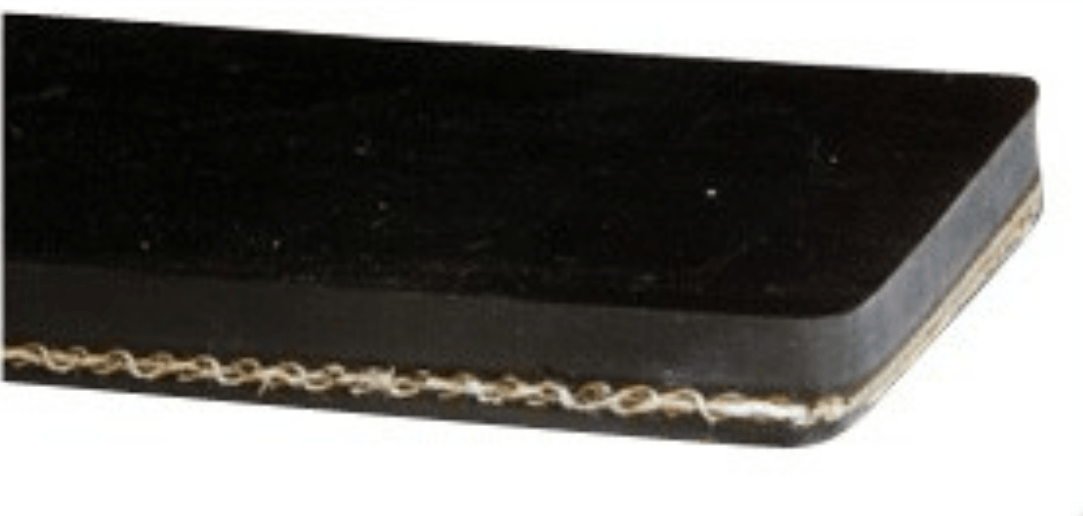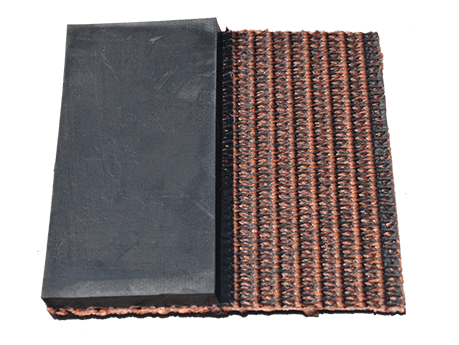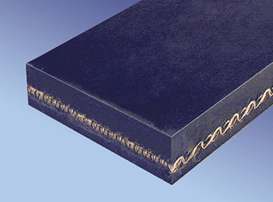Cross Rigid Conveyor Belt & Ripstop Belt
Cross Rigid Conveyor belt are engineered for applications that take a sharp upturn, with a heavy cleat and/or corrugated sidewall.
Cross Rigid Conveyor belt are rigid across the belt (fill or weft direction) but remain flexible the length of the belt (warp direction) in order to wrap the pulleys.
Cross Rigid belting add monofilament cross members to the standard conveyor belt fabric to increase the cross belt rigidity.
The increased rigidity prevents the belt from bowing or sagging during operating tensions caused by changes in horizontal/verticle direction and when supported on the return run from the edge of the belt.
Cross Rigid conveyor belting resist the side-to-side flexing normally found in conventional conveyor belting, while maintaining the flexibility to allow normal movement around standard pulley diameters.
Benefits
- Able to handle transitions while maintaining cross width stability.
- Able to take conveyor up a steeper incline when combined with cleats and sidewall.
- More flexbility with conveyor design.
Common Uses
- High incline conveyors.
- Conveyors with transitions from horizontal to verticle.

X=Cross-Stabilized Construction
E=Polyester Tension Plies
[hr]
Ripstop Belt:
Rip stop conveyor belt is mainly used to prevent the belt from penetrating or cut due to outside force factor during the conveying that cause risk of belt damage or broken.
Rip stop conveyor belt provides a special rip stop breaker inserted in top cover, this rip stop breaker has different material and specification that meet various conveying design requirement.
Features
- Good troughing index
- Good flexibility without increasing pulley diameter







